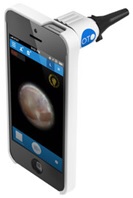Over the last six months, there has been an extraordinary change in the role of patients in health care and we can hardly keep up. As little as six months ago, the question was, “How can we help patients gain a voice in health care?” We knew that patients should have a voice and that some organizations were beginning to introduce policies and committees to welcome that voice, but what has happened since has far exceeded our expectations.
In the New York Times on April 25, 2014, there was an article that described several devices that empower patients and families to be more involved in their primary care. There are now attachments and apps for smartphones that teach parents how to examine their children for earaches and determine by themselves, or with the online aid of their doctor, whether a visit to the doctor’s office is necessary.  We already know that the cameras on some phones have become so sharp and clear that photographs of skin conditions can now be diagnosed by dermatologists online without any fancier technology. Now with the otoscope attachment and app, one can create photographs and even videos of the inner ear to check for inflammation. An otoscope is the tool that doctors use to examine the inside of your ear. The picture to the left is of the Cellscope Oto that is attached to an iPhone. Its app will allow almost anyone to examine the inner ear.
We already know that the cameras on some phones have become so sharp and clear that photographs of skin conditions can now be diagnosed by dermatologists online without any fancier technology. Now with the otoscope attachment and app, one can create photographs and even videos of the inner ear to check for inflammation. An otoscope is the tool that doctors use to examine the inside of your ear. The picture to the left is of the Cellscope Oto that is attached to an iPhone. Its app will allow almost anyone to examine the inner ear.
This visual otoscope is beginning to be used by doctors to help parents (and medical students) learn which conditions require medical intervention and which do not.
 The AliveCor is another recent device/app that allows your smartphone to monitor your heart and interpret the electrocardiogram (ECG). It can also send the ECG to your doctor. It used to be available only by prescription, but can now be purchased online for $199.
The AliveCor is another recent device/app that allows your smartphone to monitor your heart and interpret the electrocardiogram (ECG). It can also send the ECG to your doctor. It used to be available only by prescription, but can now be purchased online for $199.
As these devices and others like them become more sophisticated and better able to interpret results, they will have a profound effect on the practice of medicine. There is already a website where your photograph can be assessed by a dermatologist for a fee. In the future there will be apps that will be able to crunch the data and do that assessment themselves.
The New York Times notes that this is a continuation of the trend for patients and their families to participate more actively in their own care. Apps are no longer merely ways of communicating with the doctor who has the necessary knowledge and skills to make the diagnosis and prescribe the treatment. Now these tools will enable patients and their families to diagnose the condition and decide by themselves if a trip to the doctor is necessary.
In Ontario, there has been quite a lot of leading edge communications technology to allow doctors to examine patients at a distance. Because of the huge size of the province there are enormous remote areas where there is no easy access to specialists (and other health practitioners). The use of high definition television and tools like the remote otoscope, have allowed doctors to examine and treat patients at a distance for a wide variety of conditions – everything from eye examinations to cancer treatment follow-ups have been done through the Ontario Telemedicine Network (OTN). In fact it has been a leader in medical care among countries with large remote populations. Some of its technology is already beginning to become cheaper and more widely available through smartphones.
At a meeting on April 21, 2014, with a representative of OTN, Patients Canada explored ways to use their technology to increase services not only for remote communities but for populations that find it difficult to travel in rural and even urban communities. Many housebound patients and their families have difficulty receiving services. This new technology can become a way of getting more services, improving continuity of care, and creating stronger partnerships between patients, family members and practitioners. At Patients Canada we have recognized that far more care in the community is needed not only for housebound patients, but for others who have some difficulty accessing the health system. It may be that these new technologies can help to change that by improving communications and enabling patients and families to take on more of the diagnostic role themselves.
